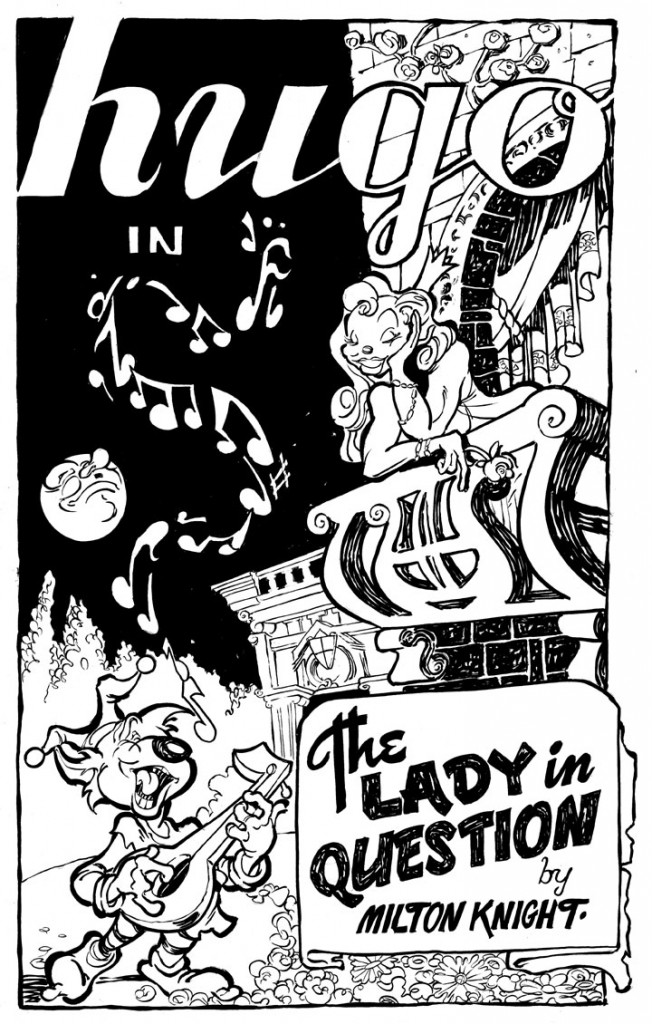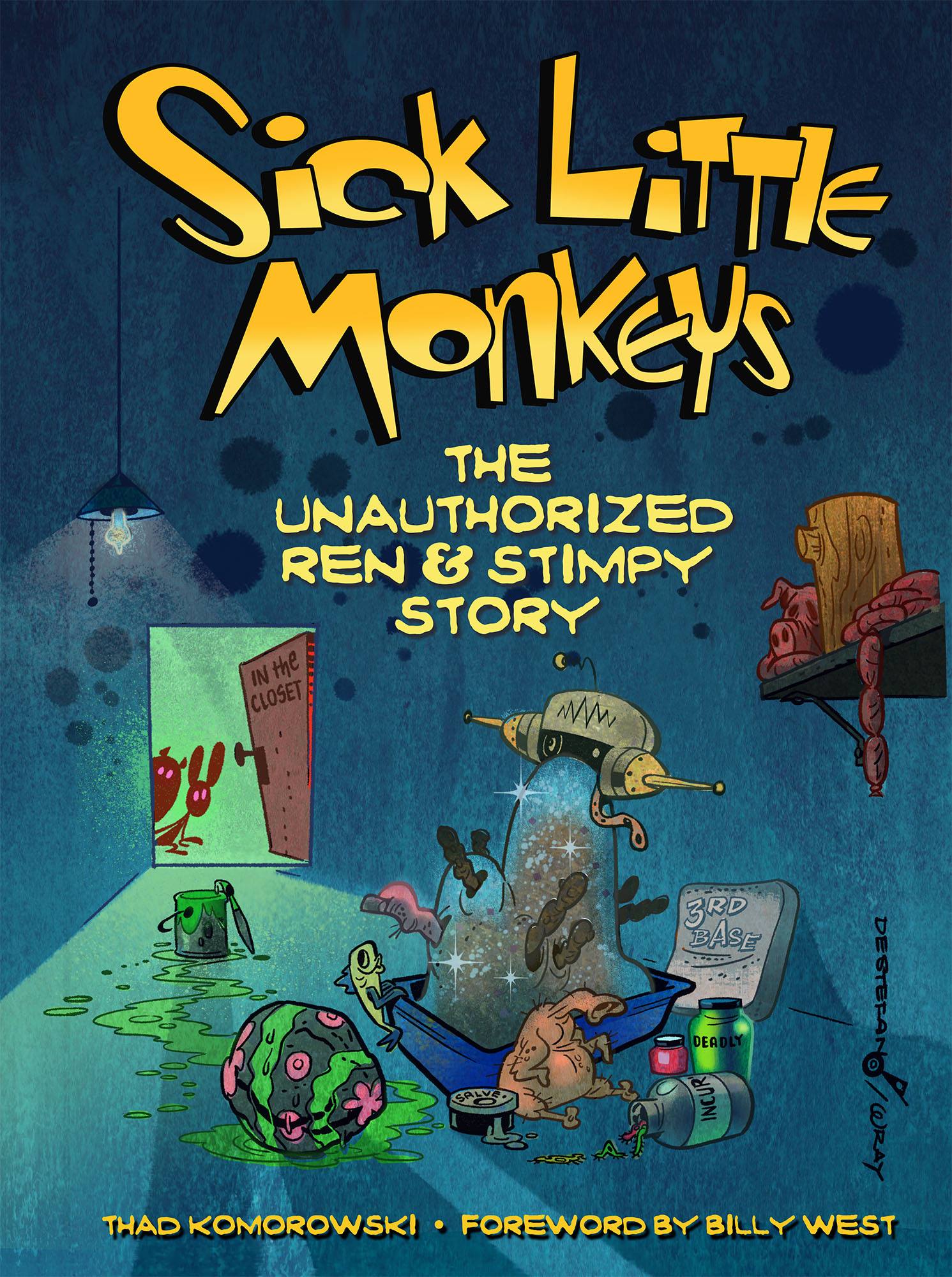 I’ve had absolutely engaging conversations with artists whose work I’d quite like to forget. Then there are those whose work I’ve always admired (and always will) whom I wish I never had a dialogue with at all. The cartoonist and animator Milton Knight fits neither category. I always learn a great deal from my chats with him and from looking at his art – and furthermore, I always enjoy it.
I’ve had absolutely engaging conversations with artists whose work I’d quite like to forget. Then there are those whose work I’ve always admired (and always will) whom I wish I never had a dialogue with at all. The cartoonist and animator Milton Knight fits neither category. I always learn a great deal from my chats with him and from looking at his art – and furthermore, I always enjoy it.
Knight is the last of the rare, nearly extinct of breed of New York cartoonists, a heritage that includes Otto Messmer, Jim Tyer, and Ralph Bakshi. A magnificent sense of chaos underlies the work of the best New York talent, and it’s scared off a large percentage of animation historians and students who prefer and champion the cushier (and often fake) Hollywood cartoon. That raw energy comes not from personal eccentricities but a rare gift that enables an artist to exploit the harsh environment he lives and works in and channel that energy in his art in spades. Rarely did the New York guys get the chances they deserved. Messmer toiled away brilliantly in repellent conditions and even today has his contributions marginalized by supporters of his convicted rapist boss [Pat Sullivan]. Tyer was despised on principle by the west coast (specifically Disney’s) and often worked on directionless product beneath his skill to support his family. And Bakshi, well…
Knight is an avid student of the medium’s history and in the elite class that knows more about New Yawk studios and personnel than anyone else, so much so that he can tell who drew/animated what in just about any Terrytoon. He uses his skill and knowledge to take the best aspects of that frenetic, neglected class of the cartooning world and gels it into his own personal visual feast for the eyes in his new digital comic Hugo: “The Lady in Question!” The story turns what might have been a token Fleischer experience into a truly twisted yarn. The staging is busy but never cluttered, and the inking is phenomenal. (The material gets raw, though in this day and age, in which the filthiest pornography is easier to get than taking out the trash, it’s nothing you’ve never seen before.)
It’s first-rate cartooning that I heartily recommend, and available at the low price of five bucks. You can order it directly from Milton at his website.


Holy mackerel! Milton Knight is quite a natural talent. He should be a much larger influence upon the current animation community. I’ve always loved classic New York animation and even some of the stuff that has been produced there in the past few decades has retained a distinctive flavor from the West Coast stuff. The older animation, like from the Fleischers, had the sorts of grittiness and observations of the real world that are sorely lacking in much of current animation today.
People need to stop thinking that everything cartoony goes back to one or two people when people like Mr. Knight have been trying to preserve the stuff that was status quo back in the 1930s and 1940s in East coast animation and add his own interpretation and point of view into the drawings.
I’ve visited Knight’s official website a few times in the past, and, judging by his work, he is definitely a genuine talent.
Is the animosity that most people have towards New York cartoonists (Bakshi, Tyer, Messmer) the result of elitism (“It’s not as refined as Disney”; “It looks like crap”; and, in Bakshi’s case, prudish tendencies “It’s just an excuse to show off boobs and butts”)?
Actually, in some cases there were animators who could do as work as refined as anything coming out of Hollywood in spite of having spent no time there (Vinci, Taras, Gentilella). But the aversion stems from something far deeper. NY and LA are completely different ways of life (and in the animation studio sense, different ways of operation), so there were always be clashing.
You mentioned in your post about Noveltoons about the organizational structure at Fleischer/Famous which shed a lot of light on why the output of the studio started to really decline after the early 1950s with the death of Sam Buchwald. In another post, you talked about how Terrytoons and Paul Terry’s incompetence made trying to get anything of worth out of that system. Maybe the differing cultures and work ethic of the two areas had something to do with why the studios on the East and West Coast were different in many ways.
I also remember seeing some Jim Tyer animation in a couple of those Captain and the Kids shorts Friz Freleng directed at MGM. Imagine if you had guys like Gent and Vinci doing work for some of those West Coast studios. I even imagined what it would have been like if Chuck Jones or someone of his caliber had ended up at the Paramount Cartoon division or Terrytoons in the 1960s.
“The Pgymy Hunt” is the short that I’m thinking of that I heard Jim Tyer did some animation on. You also said Irv Spence did some work on those too.
You can see Tyer’s work in the Captain and the Kids entry “Old Smokey”. There’s a delightful bit where the eponymous horse gets a whiff of a house burning and goes into a spin of ecstasy that is delightful and unmistakably Tyer, although handled by an exceptionally solid cleanup, ink and paint job.
Tyer did work at MGM for a time, but the PYGMY HUNT animation that is referred to is Bill Nolan’s, originator of the \’rubber-hose\’ method.
Vinci actually worked in Disney’s TV department for a time while waiting ’til his gig at MGM started. He did super work on Donald Duck in the ‘Wonderful World” hour DUCK FOR HIRE, but (according to Floyd Norman, who was at Disney, too) was always ostracized and reminded that he was not a “true” Disney man. The bias has always existed. In the case of fans and successive-generation animators, I think they are just more comforted with the stock design templates of WB and the false messages of Disney. The West Coast is more solid, but to me, more predictable.